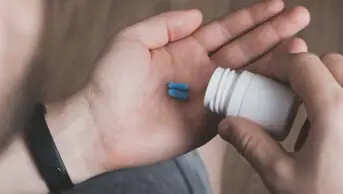During ward rounds in hospitals, pharmacists often make interventions and recommendations that help optimise the care of patients. At Basildon and Thurrock University Hospitals NHS Foundation Trust, we carried out a service evaluation to analyse pharmacist interventions on a 16-bed cardiothoracic critical care unit. We wanted to find out the frequency and types of interventions made by the ward pharmacist; evaluate the effect of pharmacist attendance to ward rounds on the total number of interventions made per day; and analyse the data for the days that a pharmacist was present on the ward round and compare the number of interventions made on and off the round.
Data were collected over a ten-month period between November 2014 and August 2015 on each working day that the regular pharmacist was present.
In total, 1,046 interventions were sampled in this period. The average number of interventions per day was between four and eight. Therapy optimisation was the highest intervention group (n=179). This was followed by incorrect/ambiguous dosing, anticoagulation and stopping unnecessary treatment. Other intervention groups included antimicrobial related, therapeutic drug monitoring, renal dose adjustments, formulary-related prescribing, and others.
On average, 40% of all interventions were categorised as ‘minor’, 55% were categorised as ‘moderate’ and 5% categorised as ‘major’. A minor intervention was defined as one that would cause minimal clinical impact if such an intervention had not taken place. A moderate intervention was defined as one that would cause temporary harm, and also included therapy optimisation. A major intervention was defined as one that would cause significant harm, likely to lead to increase length of hospital stay, or require further treatment if such an intervention had not taken place.
The data showed that the pharmacist made twice as many interventions on days they attended ward rounds versus days they did not attend (average eight versus four interventions, respectively). The data were further analysed to show that on the days that a pharmacist was present on the ward rounds, 73% of interventions were made on the round, compared with 27% of interventions made off the ward round.
From this service evaluation we concluded that, since the highest number of interventions made by the pharmacist fell under therapy optimisation group, it demonstrates that, as well as preventing medicines-related errors through interventions, pharmacists at the trust are proactively optimising pharmacological treatment. Also, pharmacists are making more interventions on the ward round with the multidisciplinary team and influencing treatment at the point of prescribing rather than off the ward, when fewer interventions are made.
This evaluation helps highlight the important role pharmacists play during ward rounds to help improve treatment of patients in an acute setting.
Anna Man
Cardiothoracic critical care pharmacist
Essex Cardiothoracic Centre
Basildon and Thurrock University Hospitals NHS Foundation Trust


